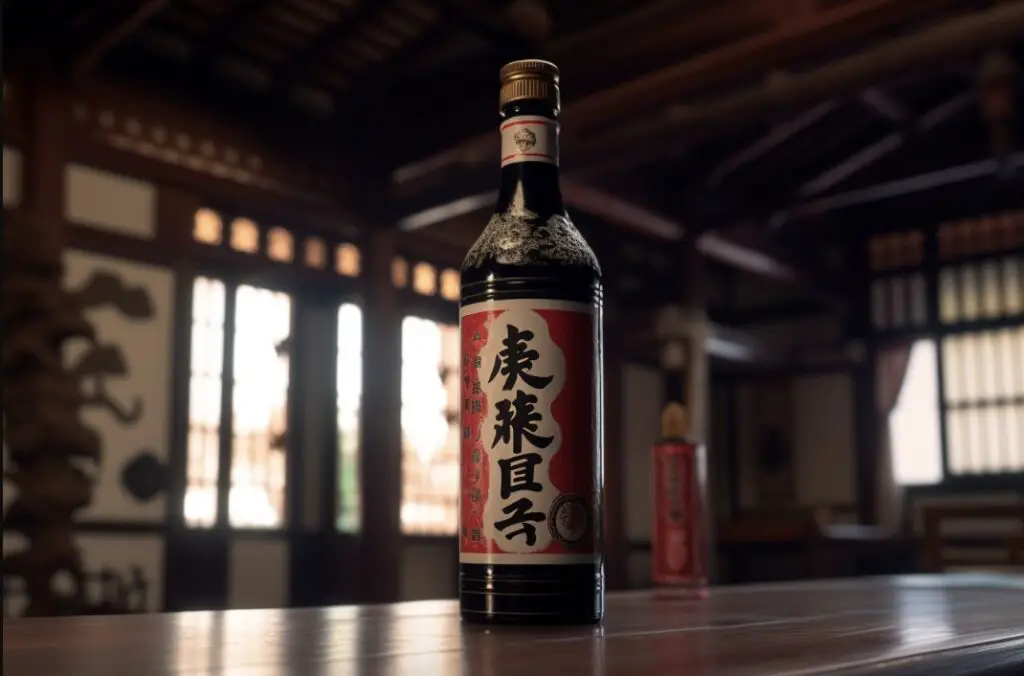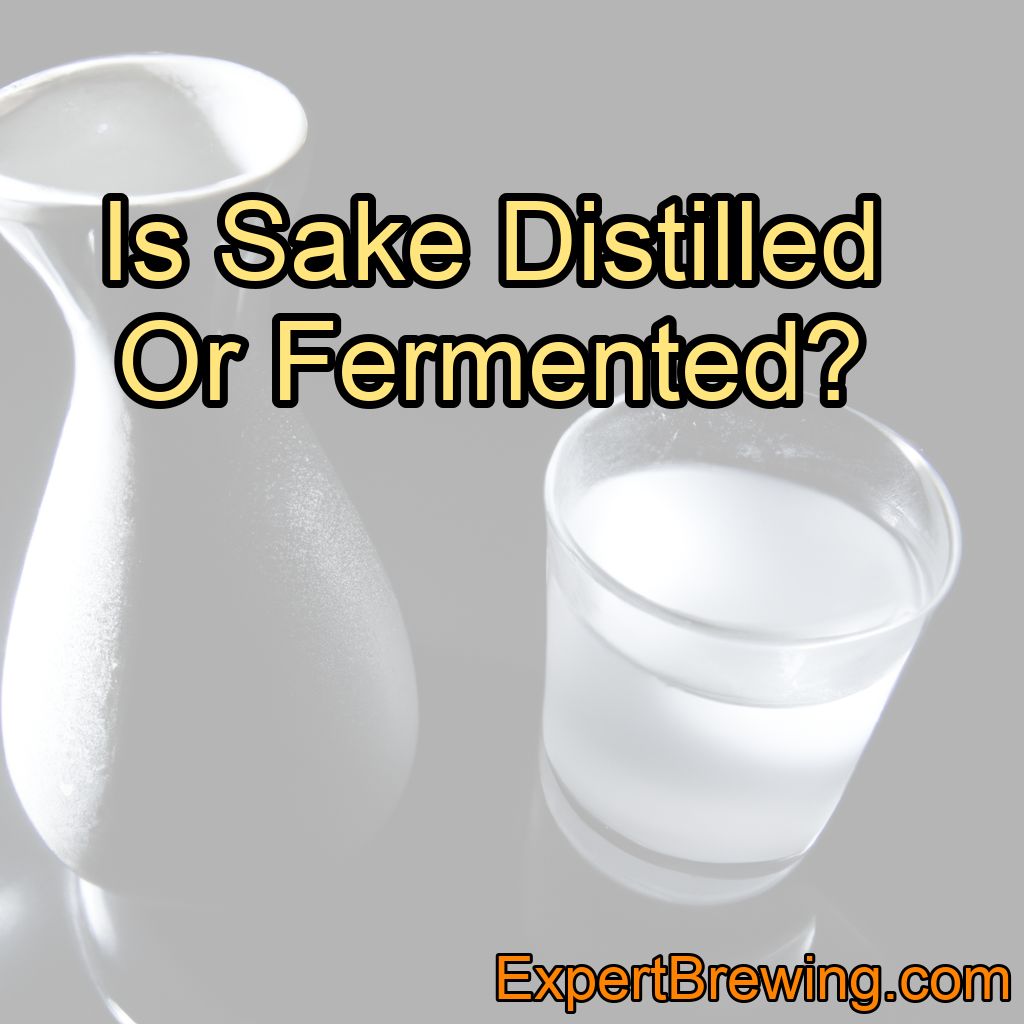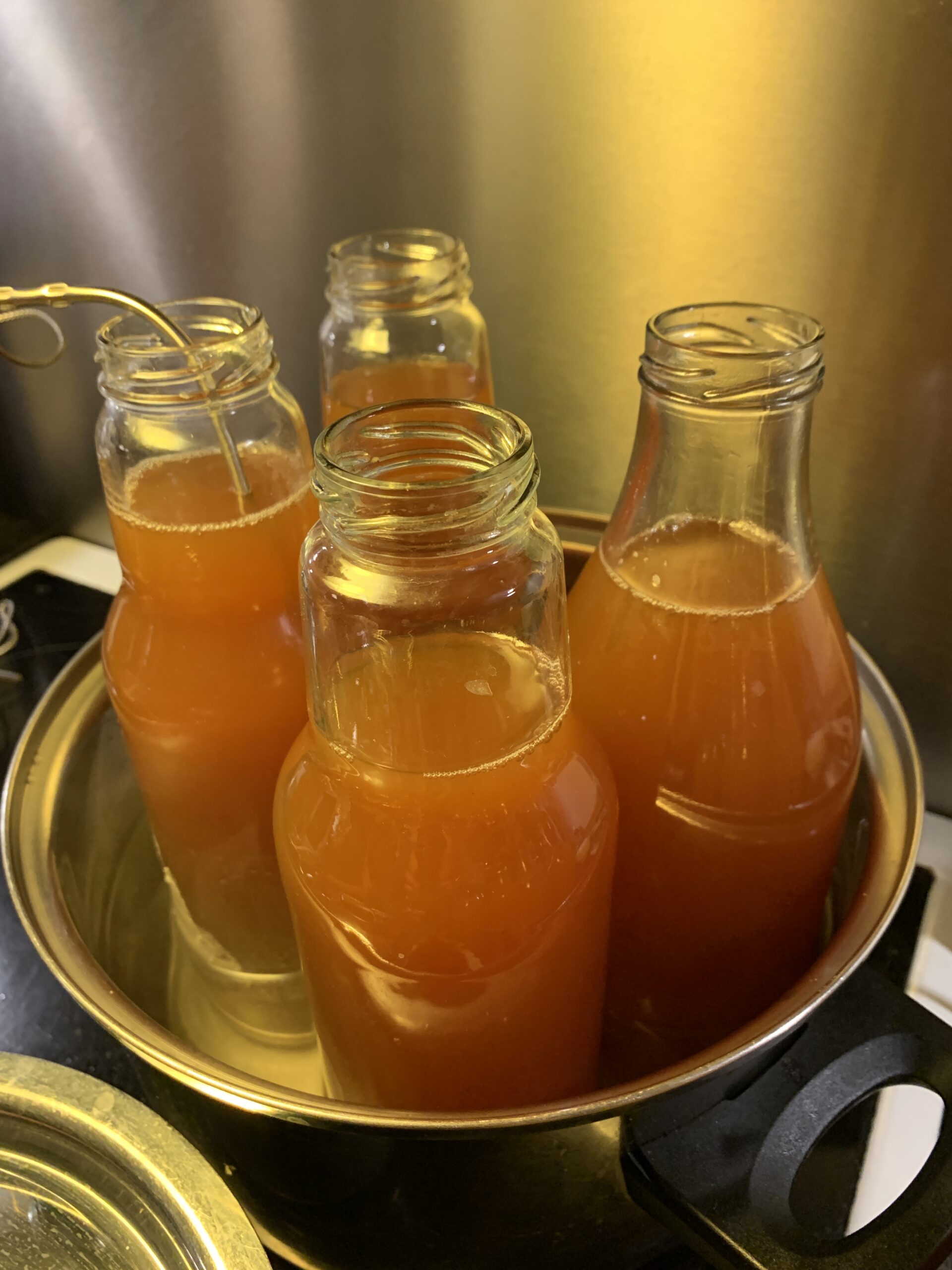Sake is a fermented beverage, not distilled.
This traditional Japanese alcoholic drink is made by fermenting polished rice, which has been partially milled to remove the outer layer.
The fermentation process in sake production is quite unique and different from that of other fermented beverages like beer or wine.
In this blog post, we will explore the process of sake production, its history, and some interesting facts about this exceptional Japanese beverage.
A Brief History of Sake
Sake, also known as nihonshu, has a rich history that dates back to over 2,000 years ago. The earliest records of sake production can be traced back to the Yayoi period (300 BC – 300 AD) when rice cultivation was first introduced to Japan.

Initially, sake was produced using a primitive method called kuchikami no sake, which involved people chewing rice and spitting it into a communal container to allow the enzymes in their saliva to break down the starches into sugars.
This mixture was then left to ferment with the help of naturally occurring yeasts.
Over the centuries, the production methods improved and evolved, leading to the development of the modern brewing process known as multiple parallel fermentation.
This unique process involves the simultaneous conversion of starch into sugar by Koji mold and the fermentation of sugar into alcohol by yeast.
Today, sake production is a highly refined art, with master brewers called toji overseeing the process and ensuring the highest quality.
The Fermentation Process
The fermentation process in sake production is quite distinct from other fermented beverages. In beer and wine production, the sugar is readily available for fermentation, whereas, in sake production, the sugar must first be extracted from the starch present in the rice. This is where Koji mold, a type of fungus, plays a crucial role. Koji mold produces enzymes that break down the starch in the rice into sugar, which is then fermented by the yeast to produce alcohol.
The process begins with the selection of suitable rice varieties, which are specifically cultivated for sake production. These rice varieties have a higher starch content and lower protein content, making them ideal for fermentation. The rice is then polished to remove the outer layer, which contains fats and proteins that can negatively affect the flavor and quality of the sake.
Once the rice is polished, it is washed, soaked, and steamed to prepare it for Koji mold cultivation. The steamed rice is then spread out on trays, and Koji mold spores are sprinkled on top. The rice is left to rest in a controlled environment for about 48 hours, during which the Koji mold grows and converts the starch into sugar.
After the Koji mold has done its job, the Koji rice is mixed with steamed rice, water, and yeast to create a mash called moto or shubo. This mixture is left to ferment for about two weeks, during which the yeast converts the sugar into alcohol. The mash is then diluted with more rice, Koji, and water to create the main fermenting mash called moromi. The moromi is left to ferment for an additional two to three weeks.
Once the fermentation is complete, the liquid is pressed, filtered, and often pasteurized to stabilize the product. The sake is then left to age for a few months before bottling.
Types of Sake
There are several types of sake, each with its unique flavor profile and characteristics. The main types of sake include:
1. Junmai-shu: Made from only rice, Koji mold, and water, this type of sake has no added alcohol or other additives. It has a full-bodied, rich flavor and a slightly acidic taste.
2. Honjozo-shu: This type of sake is made with a small amount of distilled alcohol added during the brewing process. The addition of alcohol enhances the flavor and aroma of the sake, making it lighter and more fragrant.
3. Ginjo-shu: Made from rice that has been polished to remove at least 40% of the outer layer, this type of sake is fermented at lower temperatures, resulting in a more delicate and fruity flavor profile.
4. Daiginjo-shu: This premium sake is made from rice that has been polished to remove at least 50% of the outer layer. It is fermented at even lower temperatures than Ginjo-shu, resulting in a complex, elegant, and refined flavor profile.
Sake Grades and Rice Polishing Ratios
Sake is classified into different grades based on the rice polishing ratio, which refers to the percentage of the rice grain that has been removed during the polishing process. The lower the polishing ratio, the higher the grade and quality of the sake.
– Futsu-shu: This is the most common grade of sake and has no specific rice polishing ratio requirement. It is often made with rice that has been polished to remove 30% or less of the outer layer.
– Tokubetsu Junmai/Honjozo: Made with rice that has been polished to remove at least 40% of the outer layer, this grade of sake is considered to be of higher quality than Futsu-shu.
– Ginjo/Daiginjo: As mentioned earlier, these premium grades of sake are made with rice that has been polished to remove at least 40% (Ginjo) or 50% (Daiginjo) of the outer layer.
Serving and Enjoying Sake
Sake can be enjoyed at various temperatures, depending on the type and personal preference. Some sakes are best served chilled, while others are best enjoyed warm or at room temperature.
To warm sake, it is typically placed in a small ceramic or metal container called a tokkuri and heated in hot water until it reaches the desired temperature.
Sake is traditionally served in small ceramic cups called ochoko or guinomi. When drinking sake with others, it is customary to pour for one another, as pouring your own sake is considered impolite. It is also common to toast with the phrase “kampai,” which means “cheers” in Japanese.
Sake Pairings and Cocktails
Sake pairs well with a variety of foods, particularly Japanese cuisine. It complements the flavors of sushi, sashimi, and tempura, as well as dishes like yakitori and ramen. Sake can also be enjoyed with non-Japanese foods like cheese, seafood, and even chocolate.
In addition to being enjoyed on its own or with food, sake can also be used as an ingredient in cocktails. Some popular sake cocktails include the sake martini, sake mojito, and sake sangria.
Health Benefits of Sake
Moderate consumption of sake has been linked to several potential health benefits. Some of these benefits include:
1. Improved cardiovascular health: Sake contains compounds called peptides, which may help lower blood pressure and reduce the risk of heart disease.
2. Antioxidant properties: Sake is rich in antioxidants, which can help protect the body against oxidative stress and inflammation.
3. Digestive health: The enzymes in sake can help break down proteins and promote healthy digestion.
4. Bone health: Sake contains small amounts of silicon, which may help improve bone density and reduce the risk of osteoporosis.
5. Skin health: The amino acids in sake can help promote skin hydration and elasticity, resulting in a healthy, youthful appearance.
However, it is essential to keep in mind that excessive alcohol consumption can have detrimental effects on one’s health. It is always best to enjoy sake and other alcoholic beverages in moderation.
In conclusion, sake is a fermented beverage made from polished rice, Koji mold, and water. The unique fermentation process and the use of Koji mold make sake distinctly different from other fermented beverages like beer and wine.
Sake has a rich history, a diverse range of flavors and types, and can be enjoyed in various ways, from food pairings to cocktails. So, the next time you raise a cup of sake, remember to appreciate the art and craftsmanship that goes into producing this exceptional Japanese beverage.
10 Interesting Facts About Sake:
1. Sake is a fermented beverage, not distilled.
2. Sake production dates back over 2,000 years.
3. Sake is made using a unique fermentation process called multiple parallel fermentation.
4. Koji mold plays a crucial role in converting starch into sugar for fermentation.
5. Sake is made from specially cultivated rice varieties with higher starch content.
6. There are several types of sake, each with its unique flavor profile.
7. Sake is classified into different grades based on rice polishing ratios.
8. Sake can be enjoyed at various temperatures, from chilled to warm.
9. Sake pairs well with a wide range of foods, including Japanese and non-Japanese cuisine.
10. Moderate consumption of sake has been linked to several potential health benefits.
FAQs
What is distilled sake called?
Distilled sake is called shochu.
Is soju distilled alcohol?
Yes, soju is a distilled alcohol that originated in Korea. It is typically made from rice, wheat, or barley and has a clear, colorless appearance with a relatively high alcohol content ranging from 16-53%.
Is sake brewed or fermented?
Sake is brewed using a process called multiple parallel fermentation, which involves the conversion of starch to sugar and then to alcohol through the use of koji mold and yeast. Therefore, sake is both brewed and fermented.
What is distilled rice wine called?
Distilled rice wine is commonly known as “soju” in Korea and “baijiu” in China.
Is soju fermented or distilled?
Soju is both fermented and distilled. It is typically made from rice, wheat, or barley that is first fermented and then distilled to increase its alcohol content.




